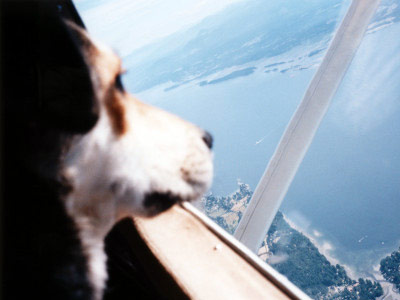Many people are attached to their pets and they prefer to take them, where ever they go. This is not an easy task and you may face many problems while travelling with them. To overcome the problem, you need to prepare a plan and move accordingly.
Further, you should make sure that the country you are planning to travel will allow the pets. There are many countries, which have the legal system of Pet Passport. It is a system, which allows the animals to travel easily between member countries without undergoing quarantine. A Pet Passport is a document that officially records information related to a specific animal, as part of that procedure.
Pets Travelling By Airline
There are many airlines, which provide the facility to take your pets along with you. However, to avail this facility you need to pay some charges. Before travelling by air, you need to check the airline website and confirm whether this facility is available with them. You should also train the pets, so that they remain calm before travelling in the airplane. Some of the following factors must also be kept in mind before taking the pet on the plane.
1) Plan early and plan well. Talk to pet travel professionals and pet owners, who have done this before, consider all viable options, and allow plenty of time to map out the best path for your pet. It is beneficial for both the pet and you.
2) Talk to your vet and find out if your pet is safe to fly. Just because you can’t bear the idea of leaving your pet behind, it doesn’t mean traveling is always the right choice. Hence, an honest conversation with a trusted veterinarian is a must before booking your flight. Age, weight, medical history, and even the temperament of your pet play a major role in deciding, if your pet is ready for the traveling experience. Overweight and elderly pets are clearly at a higher risk. Also, anxiety-prone animals or those with separation issues have problems.
3) Take extra caution with snub-nosed breeds. Pugs, Bulldogs, Boxers, Mastiffs, Persian cats, and other brachycephalic breeds are more susceptible to breathing problems and heat stroke in stressful situations such as air travel, and many vets would advise that you avoid flying with these pets. If you decide to move a snub-nosed pet, it’s important to, among other things, to choose a large travel crate that offers good ventilation. Choose a pet-friendly airline, and make sure the pet is well-hydrated before, during, and after the flight.
4) Choose a large, well-ventilated travel crate. It’s actually important for all pets to be transported in a travel crate that is not only airline-approved, but roomy and well-ventilated too. Good air flow is important in terms of your pet’s comfort level and overall safety along with proper hydration. Make sure your pet is comfortable and familiar with the crate well before the day of departure.
Travelling with pets will never be a problem, if you take proper precaution and you are in regular touch with doctors.
Pets, the better halves of your family can sometimes lose their way home, especially if you’ve relocated newly or traveling elsewhere. In such cases, it is quite obvious that people panic at first, but what’s important is to keep calm and think how to get it back.
The first thing that you could do is to speak to the state authority and file a complaint. This will relieve you of half of your worry, as you know, you have help. Losing hope is not something that you can do in such a situation. Thus, it is recommended that you be positive and provide all the minutest details about your pet to the authority, so that it helps them find your pet.
Author Bio:
Darcy Lacaze is a traveller and adventure seeker. One of his most memorable getaways is with El Cid Vacations Club.



